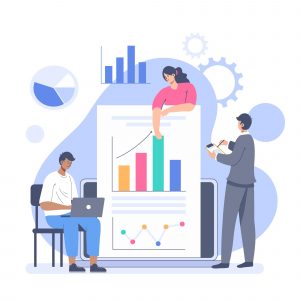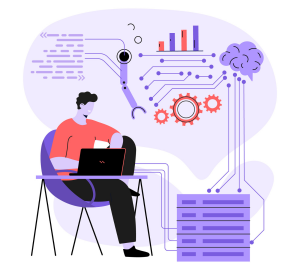An Introduction to the World of Data Science
Statistics
Data collection, analysis, interpretation, presentation, and organization are all topics that are within the scope of statistics, a field of mathematics. It is used to make sense of large amounts of information by summarizing and presenting data in a meaningful way. Statistics is used in a wide range of fields, from business and economics to social sciences and medicine. Descriptive statistics and inferential statistics are the two primary categories of statistics. Descriptive statistics are used to summarize and describe the characteristics of a dataset, such as measures of central tendency (e.g., mean, median, mode) and measures of dispersion (e.g., range, variance, standard deviation). Inferential statistics are used to make inferences about a larger population based on a sample of data, by estimating population parameters and testing hypotheses using statistical tests.


Linear Algebra
Linear algebra is a branch of mathematics that deals with linear equations, matrices, vectors, and their properties. It is widely used in various fields of science and engineering, including physics, computer science, economics, and finance.
Programming
The process of developing, creating, testing, and maintaining computer programs is known as programming. A computer program is a set of instructions that a computer follows to perform a specific task.
Programming is used in various fields, including software development, data analysis, artificial intelligence, web development, and game development. Some important skills for programmers include problem-solving, logical thinking, attention to detail, and the ability to learn new programming languages and technologies quickly.


Machine learning
Machine learning is a subfield of artificial intelligence that involves developing algorithms that can learn from and make predictions on data without being explicitly programmed. Machine learning algorithms are trained using large datasets, and they use statistical methods to identify patterns in the data and make predictions based on those patterns.
Machine learning is used in a wide range of applications, including image recognition, natural language processing, speech recognition, autonomous vehicles, and recommendation systems. Some popular machine learning frameworks and tools include TensorFlow, PyTorch, Scikit-Learn, and Keras.
Data mining
Data mining is the process of discovering patterns and extracting useful information from large datasets. It involves using statistical and machine learning techniques to analyze data and identify patterns, trends, and relationships.
Data mining techniques include clustering, classification, regression analysis, and association rule mining. These techniques are used to identify patterns and relationships in the data and to make predictions based on those patterns.
Data mining is closely related to other fields, such as machine learning, artificial intelligence, and statistical analysis. Some popular data mining tools include RapidMiner, KNIME, and IBM SPSS Modeler.


Data Visualization
Making graphical representations of data and information is the process of data visualization. The goal of data visualization is to present complex data clearly and concisely so that patterns and insights can be easily identified.







